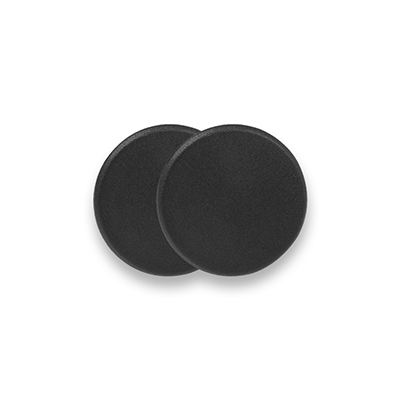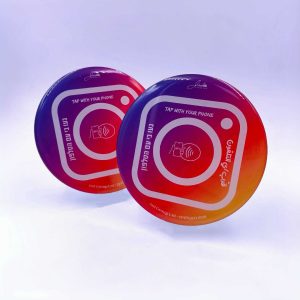RFID standards are regulations that ensure interoperability between RFID devices and components. The guidelines assist manufacturers in understanding the expected features and specifications of their products. With this knowledge, all RFID products on the market, regardless of manufacturer, will be compatible.
Different regulatory organizations, such as the International Organization for Standardization (ISO), EPC Global, and the American Standards Institute, create the standards (ANSI). This article highlights the specific standards that govern the design and features of RFID components.
What do RFID Standards entail?
RFID standards are a set of regulations governing the production and application of RFID technology. Their primary responsibility is to guarantee the safety, compatibility, and efficiency of RFID communication protocols. Here’s how the standards make RFID usage foolproof:
Increased Security. Using RFID requires the transfer of data between devices. RFID standards ensure the security of data during the transfer process.
Simplicity of Use. RFID tags are globally accepted; therefore, all components must be compatible. For example, the RFID tag of company A should be compatible with the RFID reader of company B.
Operation Safety When Employed on Humans or Animals. The regulatory agencies evaluate the strength and nature of each frequency wavelength utilized on a tag. The purpose of the analysis is to determine the safety and effectiveness of the tag on animals and humans. The regulatory authorities recommend, for instance, the use of Low Frequency (LF) RFID tags on animals due to their compatibility and effectiveness on wet surfaces.
If you want to experience all of these benefits firsthand, you must always purchase RFID components that adhere to the RFID standards.
Why RFID Standardization Is Crucial
RFID regulations are essential because they establish RFID component uniformity. With the guaranteed interoperability, it is possible to use products from two different companies without compromising their effectiveness.
Moreover, as the market is global, these regulations contribute to a rise in competition. Due to the fact that regulations have eliminated the possibility of monopolistic operations, standard RFID products are relatively inexpensive.
Arrangement of RFID Standards
RFID industry-specific standards These RFID regulations were created to regulate a particular industry, such as veterinary services, security, and tracking.
RFID Global Standards. These standards are established by international organizations to regulate RFID operations worldwide. International Standards Organization (ISO) and GS1 are the two foremost global regulatory agencies.
RFID Regional Standards. These are the regional standards that govern RFID operations. For instance, FCC Part 15 regulates the use of industrial, scientific, and medical (ISM) RFID bands in the United States. It specifies operations within the 5725-5850 MHz, 2400.0-2483.50 MHz, and 900-928 MHz frequency bands.
RFID National Standards. These are country-specific regulations governing local RFID operations. One such organization is the Standardization Administration of China (SAC). Under it are numerous other organizations, including the China National Registry of Product and Service Codes (NPC), the China Article Numbering Center (ANCC), and the Electronic Product Code (EPC) coding scheme. India, Australia, and Singapore are a few other nations with regulatory bodies.
Who Creates RFID RAIN Standards?
Are you curious about RAIN RFID? It is one of the RFID branches that links billions of objects to the internet, making them accessible to millions of users. The passive wireless technology provides businesses and consumers with real-time data. Then, they utilize the information to locate, authenticate, and interact with each item.
It is the responsibility of EPC UHF Gen2v2 or ISO/IEC 18000-63 to regulate RAIN RFID networks. GS1, the International Standards Organization (ISO), the International Electrotechnical Commission (IEC), and the Joint Technical Committee are additional international organizations that have the authority to regulate RAIN RFID (JTC1).
Several regional organizations also regulate the use of RAIN RFID. The Federal Communication Commission (FCC), the European Telecommunications Standards Institute (ETSI), and Spectrum Compliance Asia are among them.
Additionally, the International Air Transport Association (IATA), the Association of American Railroads (AAR), and the American Trucking Association can regulate the use of RAIN RFID (ATA).
RFID Standards: An Exhaustive Guide
Before purchasing an RFID system, consider all of the RFID standards listed in this section. They consist of:
ISO Standards
ISO/IEC 18000-1
This standard regulates RFID identification’s generic architectural concepts. It specifies the parameters for use with a standard air interface in RFID components. It is limited to data exchange and transactions across the air interface at reference point delta.
ISO/IEC 18000-2
This standard specifies the air interface communication parameters between a Low Frequency (LF) RFID tag and an interrogator. It controls the functionality of all tags with a frequency of 135 kHz or less.
In addition, it specifies the commands, protocols, and methods for detecting the signals of one tag among many others. This aspect is crucial because it prevents tag collision, which hinders communication and jeopardizes data security.
Implementing anti-collision standards is optional, but necessary, while all other standard components are required.
ISO/IEC 18000-3
This standard specifies the air interface communication guidelines for 13.56 MHz frequency. It specifies collision management, physical layer, and protocol values for high-frequency tags.
ISO/IEC 18000-4
This standard describes all air interface protocols for RFID devices operating at 2.45 GHz frequency wavelength. It describes two distinct modes:
Active tags that function as interrogators speak rapidly (ITF)
Battery-assisted tags that function as tags communicate rapidly (TTF)
ISO/IEC 18000-6
This standard governs the physical interactions between RFID tags and readers/interrogators. It specifies the protocols, commands, and measures to prevent a collision in 860 to 960 MHz-operating passive RFID systems (Ultra-High Frequency Range). It highlights the three incompatible types, A, B (infrequently used), and C. (equivalent to EPCglobal Gen 2).
ISO/IEC 18000-7 Seven
This specification defines an air interface for RFID devices that operates active RFID tags with a frequency bandwidth of 433 MHz. This category includes tags with a range of 1 meter (3 to 5 inches).
ISO 14443
This standard governs Near Field Communication (NFC)-enabled proximity cards. The 13.56 MHz operating frequency cards are used for identification, security, payment, and access control. The ISO 14443-compliant cards have a range of 10 centimeters.
ISO 15693
This standard regulates the operation of proximity cards that employ near-field inductive coupling. The cards operate at 13.56 MHz but have a longer read distance than proximity cards (approximately 1 meter). They are utilized in parking lots and contactless smart card management.
EPCglobal/ GS1 GEN 2
Also known as EPC Radio-Frequency Identity Protocols Class 1 Generation 2 Ultra High RFID protocol for 860-960 MHz communications. In 2013, EPCglobal (now GS1) developed the standard, and ISO 18000-6C approved it in 2015.
The standard specifies the air interface parameters for RFID tags operating between 860 and 960 MHz. Gen2v2 is the most recent version of the standards, having been created in 2013.
Specific Attributes of Gen2v2 Standards
Three Diverse Modes. The reader is capable of operating in single, multi, and dense environments. Using the dense mode, you’ll be able to utilize hundreds of readers at once.
Dynamic Coding Techniques. RFID readers that follow Gen2v2 standards can change how they encode depending on what’s going on around them. For instance, an RFID reader will use the FM0 encoding technique (which is faster) in a low-noise environment and the Miller subcarrier encoding technique (which is slower but more efficient) in a noisy environment. This ensures you obtain the best results regardless of the circumstances.
Rapid Data Transfer Rate RFID systems that are Gen2v2 compliant can transmit data at up to 640 kbps, which is five times faster than previous standards.
Additional Commands for Simplified Tag Population Management. The Gen2v2 RFID system provides commands for access, selection, and inventory. These features ensure an improved and more precise tag reading process.
Improved Safety These standards allow for up to 32-bit access passwords and “kill” passwords that make it easy to turn off tags. This feature ensures the confidentiality of data transferred via the RFID system.
Four Sessions Operations. RFID tags that conform to the Gen2v2 specifications can support up to four sessions per tag inventory. This means that four readers can simultaneously communicate with a tag without interference.
Random Number Generation for Data Security RFID tags that comply with Gen2v2 provide a forward link of randomly generated numbers to the reader. This distinctive characteristic prevents unauthorized tag writing.
Additional programmability The memory on Gen2v2 RFID tags is divided into four different banks. A bank can contain read-only, read/write, and write-once data, ensuring greater application flexibility.
Improved Q Algorithm This feature makes it easier to fix tag collisions and makes it safer for data to move between the tag and the reader.
In addition, Gen2 (V1), a more advanced upgrade to Gen2 v2, offers increased applicability, memory, and security.
















